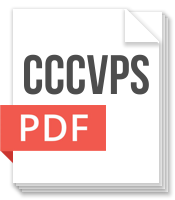Violence Prevention & CHW Initiative
Violence is a leading cause of injury and death among historically marginalized communities. It is also connected to poor health outcomes such as depression, anxiety, and diabetes, as well as high-risk behaviors such as drug and alcohol abuse, and unhealthy intimate relationships. We know that communities of color are disproportionately impacted by violence, and among the many social determinants of health, violence has been identified as a primary driver of unfavorable health outcomes. Decades of comprehensive research has established that multiple forms of violence intersect with each other and exhibit shared risk and protective factors. Dr. Deborah Prothrow-Stith, MD, of the Harvard School of Public Health acknowledged said intersection in the 2014 CDC publication, Connecting the Dots, stating that "Gang violence is connected to bullying is connected to school violence is connected to intimate partner violence is connected to child abuse is connected to elder abuse. It's all connected."
Our model identifies Community Health Workers in Violence Prevention (CHWVP) and authentic Community Based Organizations (CBO's) as a principal leader in the advancement of a Community-Based Public-Health response to Violence (CPrV).
What are Community Health Workers in Violence Prevention?
"A Community Health Worker (CHW) is a frontline public health worker who is a trusted member of and/or has an unusually close understanding of the community served. This trusting relationship enables the worker to serve as a liaison/link/intermediary between health/social services and the community to facilitate access to services and improve the quality and cultural competence of service delivery. A community health worker also builds individual and community capacity by increasing health knowledge and self-sufficiency through a range of activities such as outreach, community education, informal counseling, social support and advocacy." - American Public Health Association, Community Health Workers. Published 2009.
Currently the CDC and various organizations across the country are actively working to define and advance the CHWVP profession. CHASM has representation among the lead co-authors and our program is strongly aligned with CDC's current definition and baseline CHWVP model. This includes the capacity of CHW in violence prevention to navigate across the spectrum of the Socio-Ecological spheres of influence, in response to what research has established as primary drivers of violence and social instability.
CHASM identifies three primary CHWVP roles:
- Direct Service: Implementing a robust network of referral-based assistance that helps to support wrap-around services and social support for individuals and families.
- Health Promotion, Community Organizers and Partners in Research: Developing, adapting and implementing training. This role also includes community level capacity building initiatives, advocacy, and equitable partnerships in research to increase the value and use of qualitative research.
- Executive level Advocacy and Policy: Contributing to policy and strategic planning regarding decisions that impact the populations they serve and represent
What is a Community-Based Public-Health response to Violence (CPrV)?
CPrV is a comprehensive community-led strategy that advances violence as a public health priority and community assets as primary facilitators of violence prevention initiatives when equipped with public health science and deployed within historically marginalized communities.
- CPrV is an adaptation of nationally recognized evidence-based initiative titled STRYVE (Striving to Reduce Youth Violence Everywhere), originally introduced by the Centers for Disease Control & Prevention (CDC) and executed by the Multnomah County Health Department (MCHD). [STRYVE Final Evaluation Report (PDF)]
- STRYVE MCHD 2011-2016 focused on youth violence prevention deployed in 4 cities across America: Salinas, CA; Houston, TX; Boston, MA; and Portland, OR.
- Program objectives were to promote violence as a public health priority and effectively demonstrate the value that public health brings to the violence prevention discipline within a 5-year timeline. (2-year planning and a 3-year implementation of two evidence-based curricula.)
- STRYVE MCHD 2011-2016 identified a total of 5 evidence-based programs within its implementation.
- CHASM's program is an adaptation of Multnomah County Health Department's (MCHD) model. Whereas the STRYVE initiative in MCHD consisted of Health Department staff and executive personnel leading and then engaging multiple professional disciplines and community stakeholders in educating and collaborating in the implementation of violence prevention strategies, we have designed this model utilizing existing community leadership and infrastructure as the primary facilitators.
Core Strategies
- Community Professional Development: CHW-VP [evidence-based]
- Youth Leadership Development: Youth Empowerment Solutions (YES) [evidence-based]
- Repurposing the Built Environment: Crime Prevention through Environmental Design (CPTED) [evidence-based]
- Community Qualitative Research: Community-Based Participatory Research [evidence-based]
- Pedagogy of Empowerment: Popular Education [evidence-based]
Supportive Strategies
- Multi-sectored Stakeholder Coalition [evidence-informed]
- Community Healing Initiative [evidence-informed]
The primary goal of CHASM is to establish CPrV as a nationally recognized evidence-based program that increases capacity within historically marginalized communities to advance violence as a public health priority and community based leadership and professional capacity as essential to effective violence prevention strategies.
CPrV in Action
CPrV is currently being implemented in Wilmington, North Carolina's Cape Fear region (please see Cape Fear's Comprehensive Community Violence Prevention Strategy) and aims to demonstrate its scalability across multiple communities throughout America.
For more information on this comprehensive, community-based approach to violence prevention, please review the CCCVPS page on the Quality Life Blueprint site, or click below to download the full PDF document. Also, read the Wilmington, NC Star News article on the Sokoto House to see how some of these strategies are being implemented.








